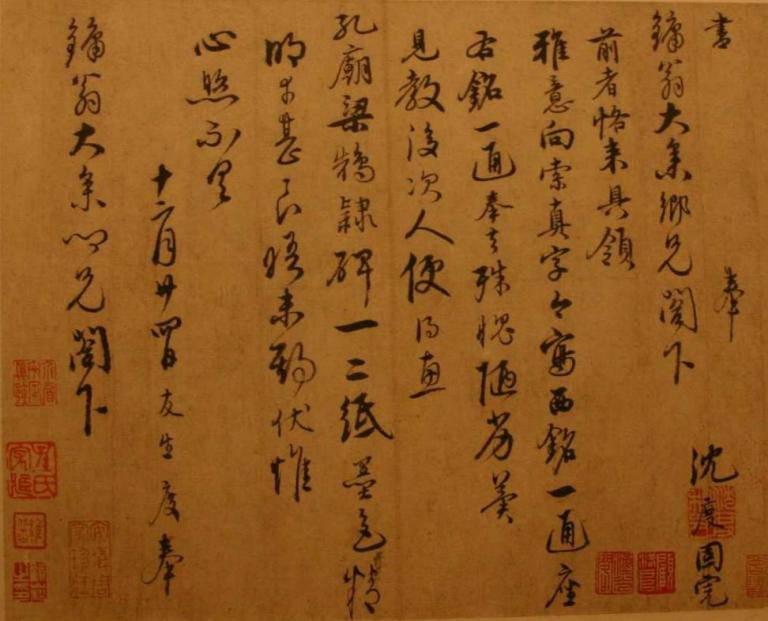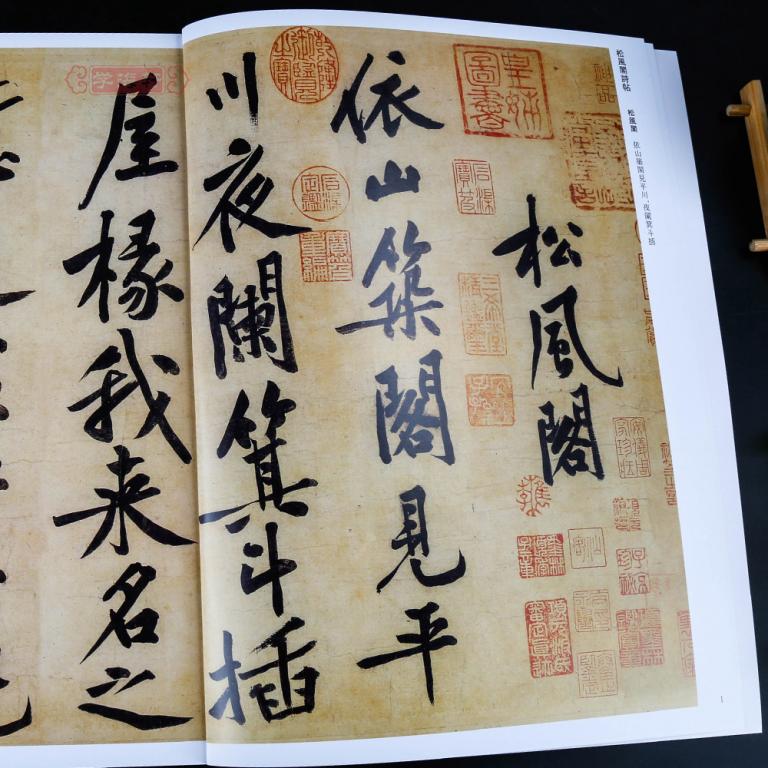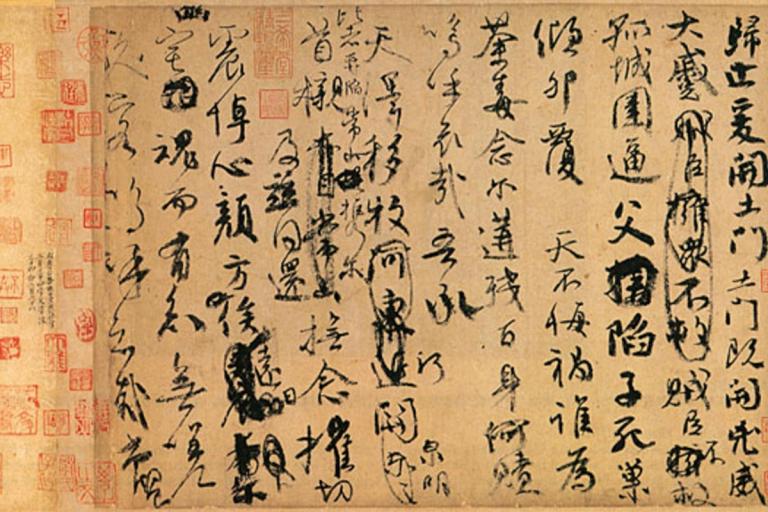Dynasties and Calligraphy
5 min readCalligraphy in Pre-Qin Period
Pottery script discovered in Shandong Province is the rudimentary form of Chinese language.It appears in single word and is far from mature.After pottery script,Oracle-bone Script found in the relics of the Shang Dynasty is commonly considered the earliest Chinese writing.
In addition,the scripts of the Pre-Qin Period also included the ancient writings of the six states,which were roughly called Large-seal Script.One of the most famous examples of Large-seal Scripts is Stone-drum Script,getting its name because the characters were engraved onto the tops and sides of the large stones shaped like drums.
When Qin Shihuang unified the six states in 221 BC,he began to unify characters based on previous scripts.The officially unified characters are called Small-seal Script to distinguish from the Large-seal Script,and early forms of Official Script also appeared.

Calligraphy in the Han Dynasty
It was difficult for Seal Script to spread because this type of script was not practical in daily life with its complicated strokes.Furthermore,the Qin Dynasty was short in duration,and the establishment of new dynasties assuredly advocated new types of scripts to distinguish from the previous dynasties.The Han Dynasty was the first blooming period of Chinese calligraphy,but calligraphy didn’t become a form of art until the Eastern Han Dynasty.
Official Script was the most important and influential script during the Han.Paper was not widely applied in daily life,then silk and tablets were the two common materials to write on.Throughout the over 400 years of Han,almost all tablets were written in Official Script,which was characterized by simplicity and elegance.

Calligraphy in the Wei and.Jin Period and Southerm and Northern Dynasties During the Wei and Jin Period,the basic five types of scripts all came into being,with full development of Cursive,Regular and Running Scripts.Calligraphers emphasized the expression of their inner emotions and feelings through their handwriting.They made their efforts to improve their writing techniques,pushing calligraphy to its first peak.From then on,people began to compose and appreciate calligraphy.During this time many important calligraphers emerged,including the most influential figure,Wang Xizhi,who was regarded as the sage of calligraphy .
The Southern and Northern Dynasties witnessed a long time of splits and chaos;however,calligraphy during this time achieved a high level despite the political turmoil.Calligraphy in the Northern Dynasties featured Regular Script on stone tablets or steles.
Calligraphy in the Sui and Tang Dynasties
Calligraphy reached another peak during the period of Sui and Tang.In the Tang Dynasty,the government even set up institutes and colleges for calligraphy study.Calligraphy was taken into account when evaluating a person and was one of the ways to select talents.Even today,a person with a nice handwriting would be greatly admired and respected.”
All five basic scripts developed in the Tang Dynasty,and the Regular Script was the predominant script and was believed to have reached its maturity in the Tang Dynasty.Tang calligraphy has been noted for its solidity and strength,which also demonstrated the author’s irreproachable moral character.Calligraphy had come to be seen as a vehicle to express one’s social status and knowledge.There was also a very close relationship between poetry and calligraphy as practiced by the educated elites from this time forward.Wang Xizhi’s calligraphy gained national popularity because of the strong preference of the Tang emperor.The wide reach of Buddhism led to the development of religious calligraphy.The Tang Dynasty also witnessed improvements in calligraphic theories.
Calligraphy in the Song and Yuan Dynasties
Calligraphy further improved during the Song Dynasty.Instead of following strict rules when writing,calligraphers focused more on their own interests,showing individual personality in their writings.The Yuan was the first dynasty that was ruled by the ethnic minorities.Being discriminated against by the ruling classes,a great many Han literati shifted their attention from politics to poetry,calligraphy and painting.They wrote to express their inner feelings.Poetry,calligraphy,and painting further integrated with each other and became a distinctive Chinese art form.Additionally,more theoretical books on calligraphy were published,providing theoretical guidance and bases for the calligraphy lovers in later times.
Calligraphy in the Ming and Qing Dynasties
The calligraphy in the Ming Dynasty basically inherited that of the Song and Yuan Dynastieswith little improvement.On the contrary,the Qing Dynasty witnessed the third peak period ofcalligraphy with many famous calligraphers leaving behind numerous excellent works.Like the Yuan,the Qing was also ruled by ethnic minorities,but unlike the ruling classes of the Yuan,the Qing emperors paid special attention to Han culture and invited many Han court officials.At the beginning of the Qing Dynasty,the calligraphy inherited the basic scripts that had been popular during the Song,Yuan and Ming Dynasties.Namely,Running Script and Cursive
Script were in domination. From Emperor Qianlong, Official Script and Seal Script came back to the tide and became fashionable again.
Today’s Calligraphy
Calligraphy still holds an important position in today’s China. Stones inscribed with the calligraphy of artists are erected at various places of interests and other famous sites. Calligraphy can be seen on shop signs, on couplets posted on doors during the Spring Festival, and even on the walls of houses as decoration.
During the 20th century, besides traditional brushes, people began to use other writing tools, such as pencils, pens, ball-point pens. Calligraphy is no longer an art associated primarily with the scholarly elites, and it becomes a popular amateur art practiced by people from all walks of life who find pleasure in it. Meanwhile, calligraphy is not only practiced in China, some Asian people like Koreans and Japanese appreciate calligraphy, considering it an important cultural heritage. And those who excel in callgraphy are highly respected.
In recent years, as computers have entered everyday life, an increasing number of Chinese rely heavily on keyboards. Calligraphy has become distant from our lives, and good handwriting can be somewhat considered one’s strong suit. Practicing calligraphy requires patience and long-term efforts. In this high-speed society, it may be worthwhile to settle down and improve oneself by taking up calligraphy.









